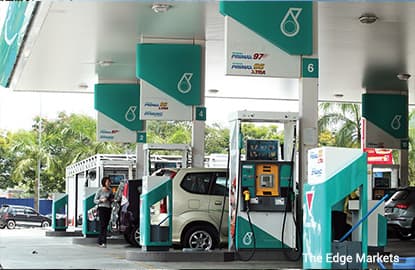

This article first appeared in The Edge Financial Daily, on June 9, 2016.
Oil and gas sector
Negative for upstream, positive for downstream: Brent crude oil price has staged a significant rebound of approximately more than 41% year to date (YTD) to reach a 2016 high of US$51.44 per barrel (RM208.85). The average Brent price YTD currently stands at US$39 per barrel. In view of the steeper-than-expected rise in Brent crude price, we are revising our 2016 average Brent price forecast upwards to US$45 per barrel from US$40 per barrel previously.
Despite the steep increase in crude oil price, we do not believe that offshore activity contract values, charter rates or fabrication rates will reach that of 2011 to 2014 levels when crude oil prices were hovering above US$100 per barrel. Even if oil prices were to sustain at current levels and possibly trade beyond US$50 per barrel for a prolonged period, it is likely that the value of new projects, contracts and charter rates would see a significant decline in terms of value compared to the glory days of US$100 oil. As such, oil and gas service providers would need to adjust their respective cost structures to be in line with the new norm in revenue in order to preserve profit margins and remain profitable.
In a bid to reduce overall operating cost, oil majors such as Petroliam Nasional Bhd (Petronas) have been aggressively reducing operating cost both internally and externally via their vendors. Dubbed Coral 2.0, Petronas is focused on reducing cost via three value levers namely: i) proactive demand management; ii) spend consolidation; and iii) driving innovation. Petronas targets to achieve an annual cost saving of between RM4 billion and RM7.5 billion before or by the end of the next five years. The effects from this cost-saving campaign have been felt across local oil and gas service providers. This is evident from reducing revenue for most offshore service providers in the past many quarters.
In tandem with decline in revenue, oil and gas service providers would need to reduce their operating cost to maximise the overall efficiency in maintaining their profit margin and sustaining profitability. The efficiency ratio or operating cost-to-revenue ratio measures how much is spent to earn RM1. Hence, the lower the ratio the better — or the more stable the ratio in relation to declining revenue the better.
Should oil prices be able to breach higher sustainable levels in the future, we opine that companies which were able to efficiently manage cost in a low oil price environment could benefit the most. We have measured the operating efficiency of a selected number of oil and gas service providers listed on Bursa. In times of declining revenue, companies such as SapuraKencana Petroleum Bhd, Gas Malaysia Bhd, Petronas Chemicals Group Bhd, Petronas Gas Bhd, Destini Bhd, Deleum Bhd and KNM Group Bhd have displayed the ability to maintain or decrease their operating cost in relation to declining revenue. Incidentally, SapuraKencana, Gas Malaysia and KNM remain our top Buys for the sector.
These companies have displayed competent managerial skills in reducing overhead cost, reducing redundancies (both personnel as well as operations), reducing wastages and have displayed efficient capital and working asset management. Based on the effectiveness of company management to synchronise and rationalise operating cost in tandem with revenue, we maintain our “buy” recommendations on SapuraKencana (buy, target price [TP]: RM2.72), Gas Malaysia (buy, TP: RM2.92) and KNM (buy, TP: 59 sen). As we are positive on the downstream segment of the oil and gas value chain, we prefer stocks with Petronas’ refinery and petrochemical integrated development project exposure. We are recommending downstream specialty companies such as KNM and Muhibbah Engineering (M) Bhd (buy, TP: RM3.05). — MIDF Research, June 8.